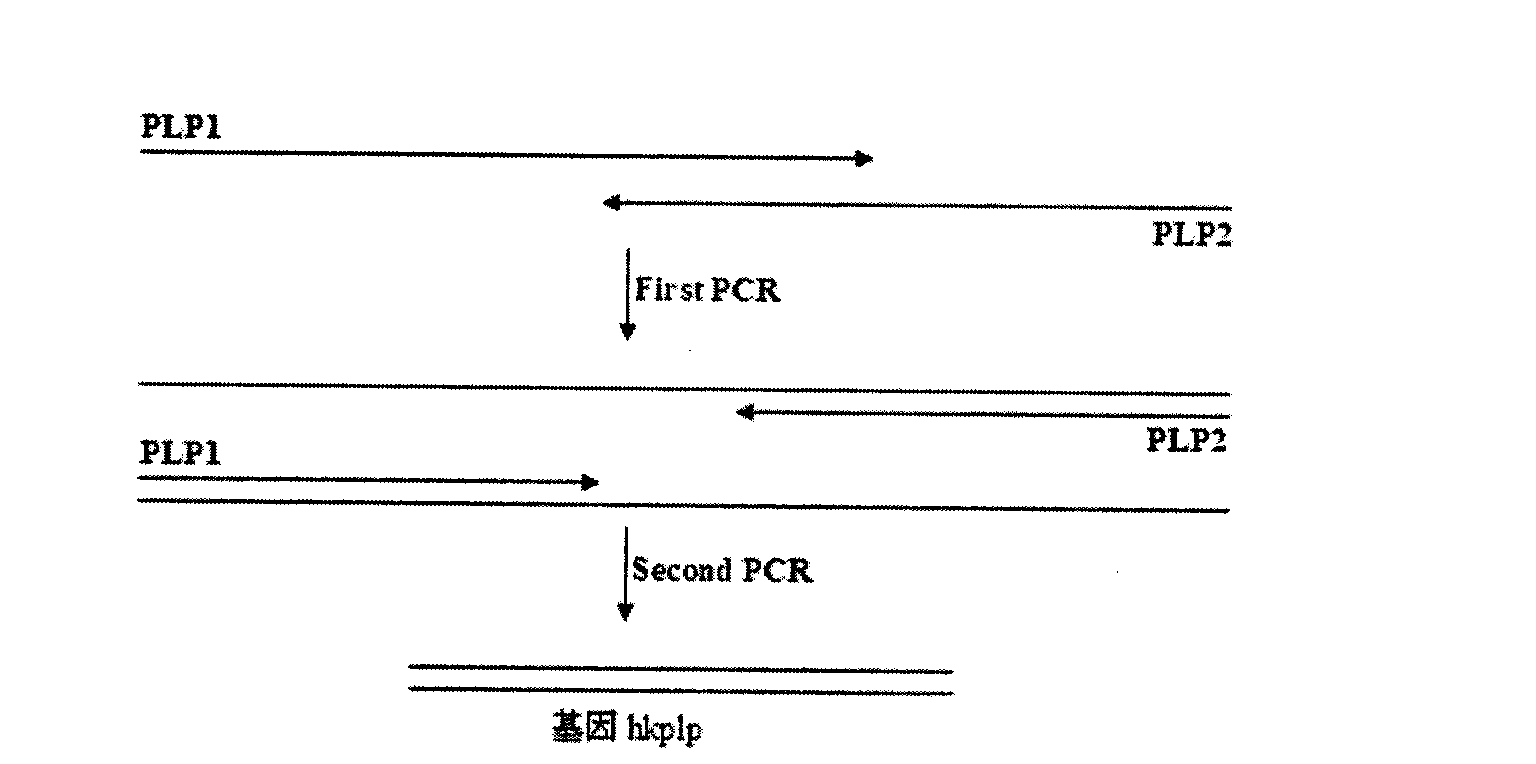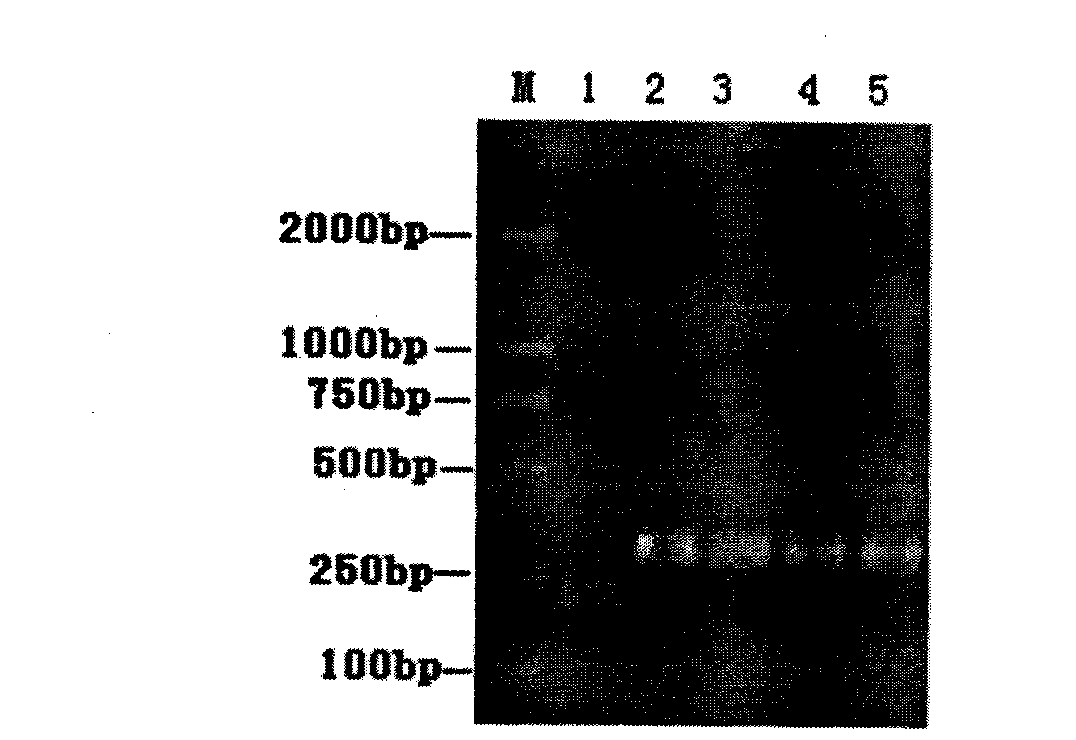Hippocampus antibiotic peptide pichia pastoris engineering strain and use thereof in breeding
A technology of Pichia pastoris and Pichia pastoris, applied in the field of genetic engineering, can solve problems such as influence, and achieve the effects of prolonging storage period, good water solubility and good stability
- Summary
- Abstract
- Description
- Claims
- Application Information
AI Technical Summary
Problems solved by technology
Method used
Image
Examples
Embodiment 1
[0018] Embodiment 1 The production method of recombinant yeast expression antimicrobial peptide HKPLP product
[0019] (1) Synthesis of antimicrobial peptide gene hkplp
[0020] The antimicrobial peptide gene hkplp was optimally designed according to yeast preferred codons, and two primers, PLP1 and PLP2, were synthesized respectively. There was a 15 bp complementary paired sequence between the two primers, which were used as templates for PCR amplification. Synthetic antimicrobial peptide antimicrobial peptide gene hkplp flow chart is as follows figure 1 shown.
[0021] PLP1:
[0022] 5'-CGGGATCCACCATGTTTTTGGGACTTATTTTTCACGGTCTGGTTCACGCCGGAAAGCTG-3'
[0023] PLP2:
[0024] 5'-CGGAATTCTCATTAACCACGATTTCTGTGGATCAAACCGTGGATCAGCTTTCCGGCGTG-3'
[0025] Reaction conditions:
[0026] 10×PCR reaction buffer 2μL
[0027] dNTPs (2.5mmol / L) 2μL
[0028] PLP1 1 μL
[0029] PLP2 1 μL
[0030] pfu Taq (2U / μL) 0.5μL
[0031] ddH2O 13.5μL
[0032] ...
Embodiment 2
[0058] Example 2 Application of recombinant antimicrobial peptide HKPLP to promote the growth of prawns
[0059] The antimicrobial peptide product is used as a feed additive to make feed for raising prawns. There are three groups of experimental components, which are low, medium and high antimicrobial peptide groups, and the final concentrations are respectively added to 200ppm, 500ppm and 1000ppm. Three treatments are established in each experimental group. , each treatment prawn initial tail number is 30, control the same water quality, temperature and dissolved oxygen of each experimental group, respectively record the survival rate of each treatment, the average weight of each tail at the beginning and end, and the food intake of a single tail, the results are shown in Table 2 below, It can be seen from the results that the average survival rate and single-tail weight gain rate of the experimental group added with antimicrobial peptide feed additives were significantly high...
Embodiment 3
[0062] Example 3 Application of recombinant antimicrobial peptide HKPLP to promote chicken growth
[0063] Select 1000 freshly hatched commercial AA broilers with the same male-to-female ratio and divide them into a control group and an experimental group, each with 500 chickens. The control group selected the full-price feed prepared with 4% broiler premix, and added antibiotics according to the recommended amount. The test group did not add antibiotics, and the feed was full-price feed prepared by 4% broiler premix, and 0.04% antimicrobial peptide HKPLP was added, and the test period was 6 weeks. The feeding conditions of each group were the same, and the feeding management was carried out according to the conventional feeding management system of the chicken farm.
[0064] At the beginning of the test, the weight of the chickens in each group was weighed, and the body weight and feed weight of the chickens were weighed on an empty stomach in the morning on the 21st and 42n...
PUM
 Login to View More
Login to View More Abstract
Description
Claims
Application Information
 Login to View More
Login to View More - R&D
- Intellectual Property
- Life Sciences
- Materials
- Tech Scout
- Unparalleled Data Quality
- Higher Quality Content
- 60% Fewer Hallucinations
Browse by: Latest US Patents, China's latest patents, Technical Efficacy Thesaurus, Application Domain, Technology Topic, Popular Technical Reports.
© 2025 PatSnap. All rights reserved.Legal|Privacy policy|Modern Slavery Act Transparency Statement|Sitemap|About US| Contact US: help@patsnap.com



